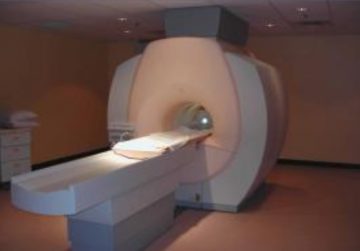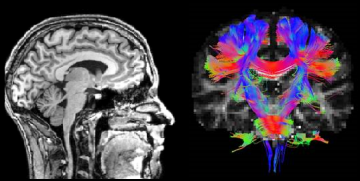

Structural Image of Brain Image of Brain Tracts
A Brief Description
The MRI is a large device we use to take picture of your brain. It does this by using strong magnetic fields instead of radiation, which is used in X-rays and CT scans.
Using the MRI we can see the structure of your brain as well as the function. We can look at white and grey matter, the tracts of your brain (how the regions of your brain are talking to each other) as well as what areas are active at rest and while your active.
MRI Safety
There is very little known risk associated with undergoing an MRI scan. MRI is used routinely in hospitals around the world. Some people may find it uncomfortable to be in a small space, to be lying still for a period of time or due to the loud noises the MRI makes (though ear plugs and headphones are provided)
Since the MRI uses magnetic fields metal may heat up or be move so to be safe if you have the following you will not be able to have an MRI at our research centre:
- pacemaker
- brain aneurysm clip
- cochlear implant
- recent surgery or tattoos within the past 6 weeks
- possibility of pregnancy
- electrical stimulator for nerves or bones
- implanted infusion pump
Many implants are okay but if you have any of the following, please let us know and we’ll try to get your surgical report and contact the UBC MRI Research Centre to ensure they are MRI safe:
- history of any eye injury involving metal fragments
- you have been a metal worker (grinding, machining, or welding)
- artificial heart valve
- orthopedic hardware (artificial joint, plate, screws, rods)
- other metallic prostheses
- coil, catheter of filter in any blood vessel
- ear or eye implant
- shrapnel, bullets, or other metallic fragments
- medication releasing skin patches (nicotine, birth control, nitroglycerine)